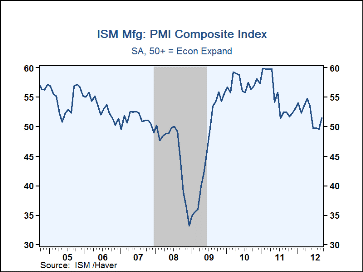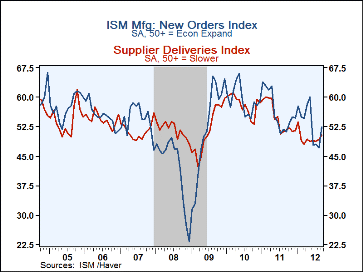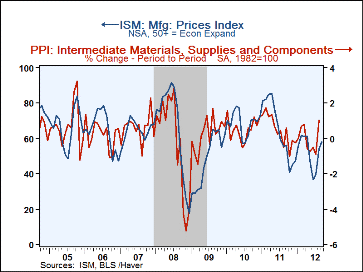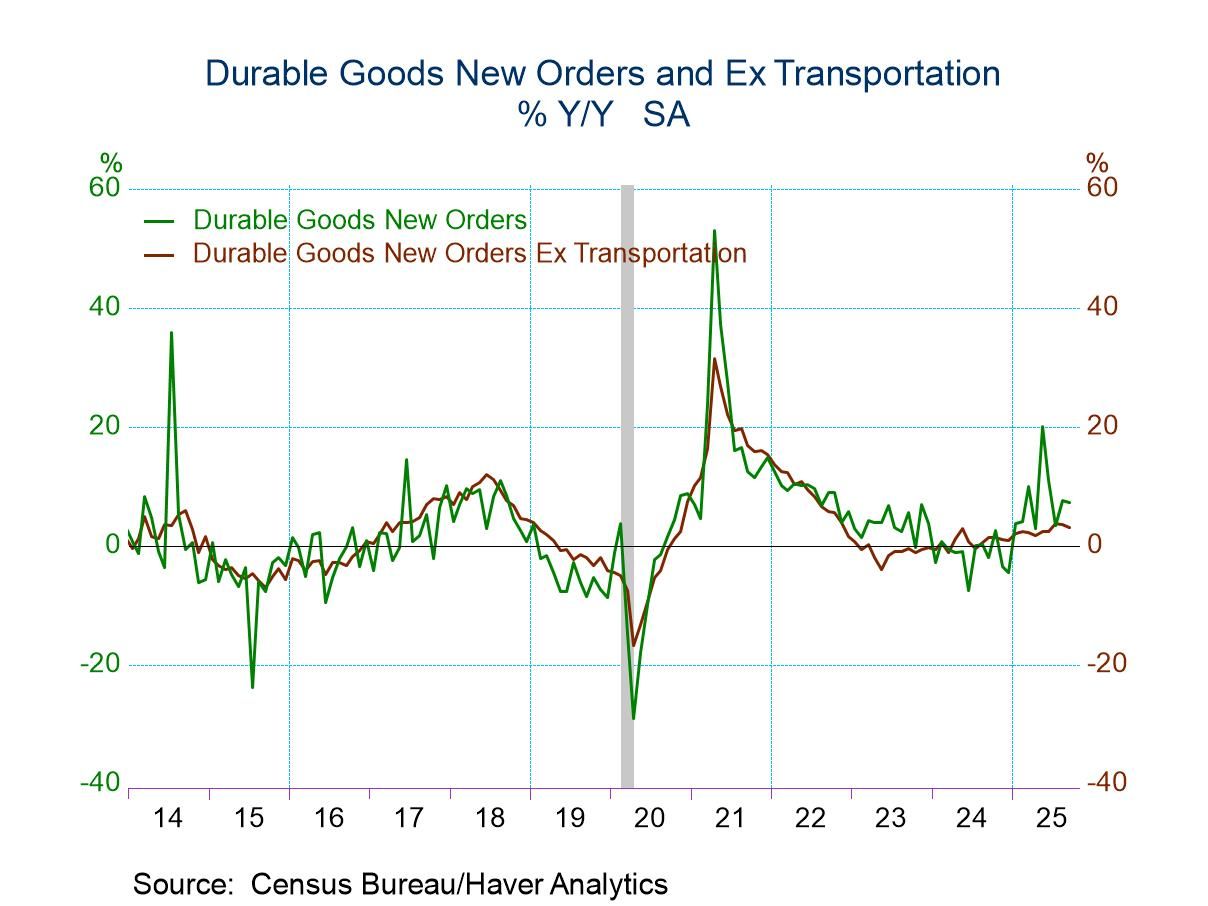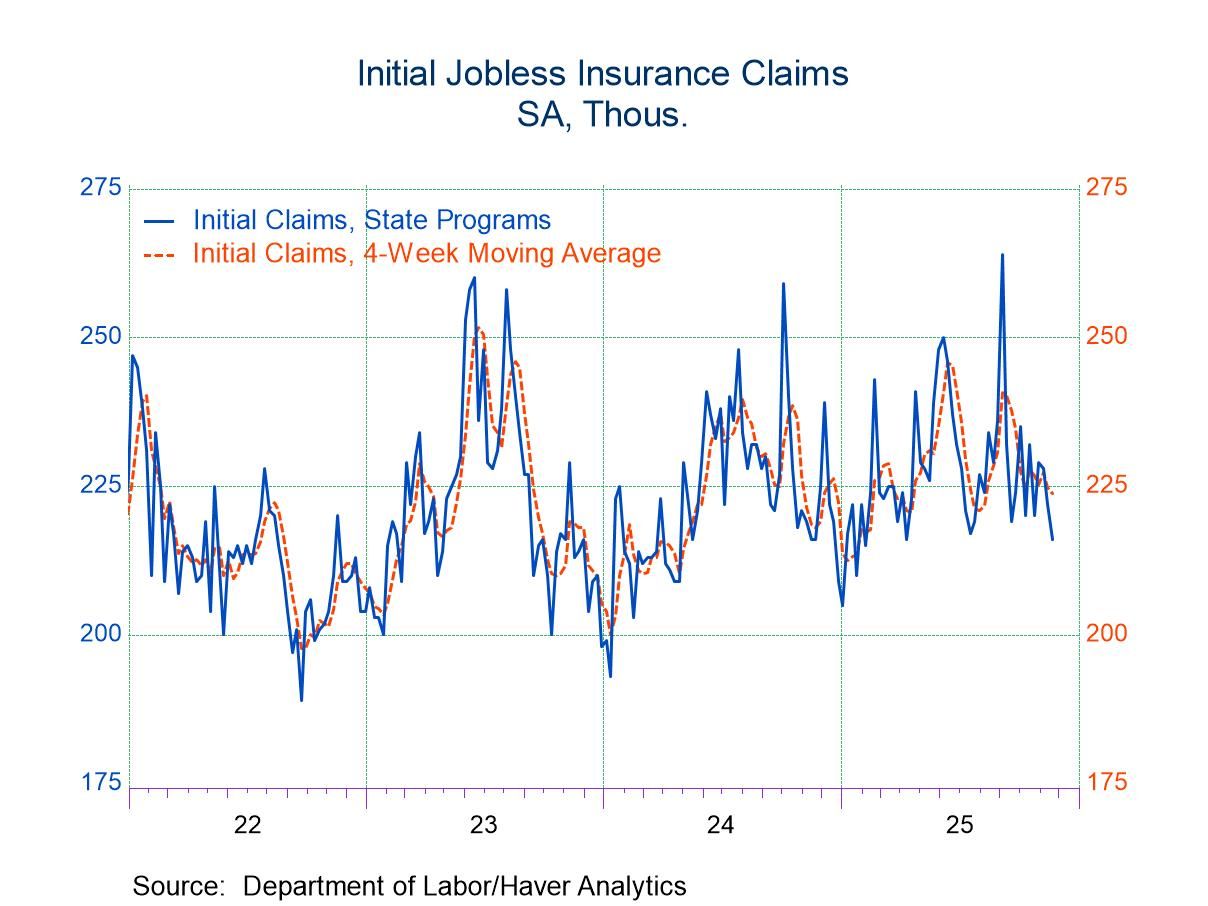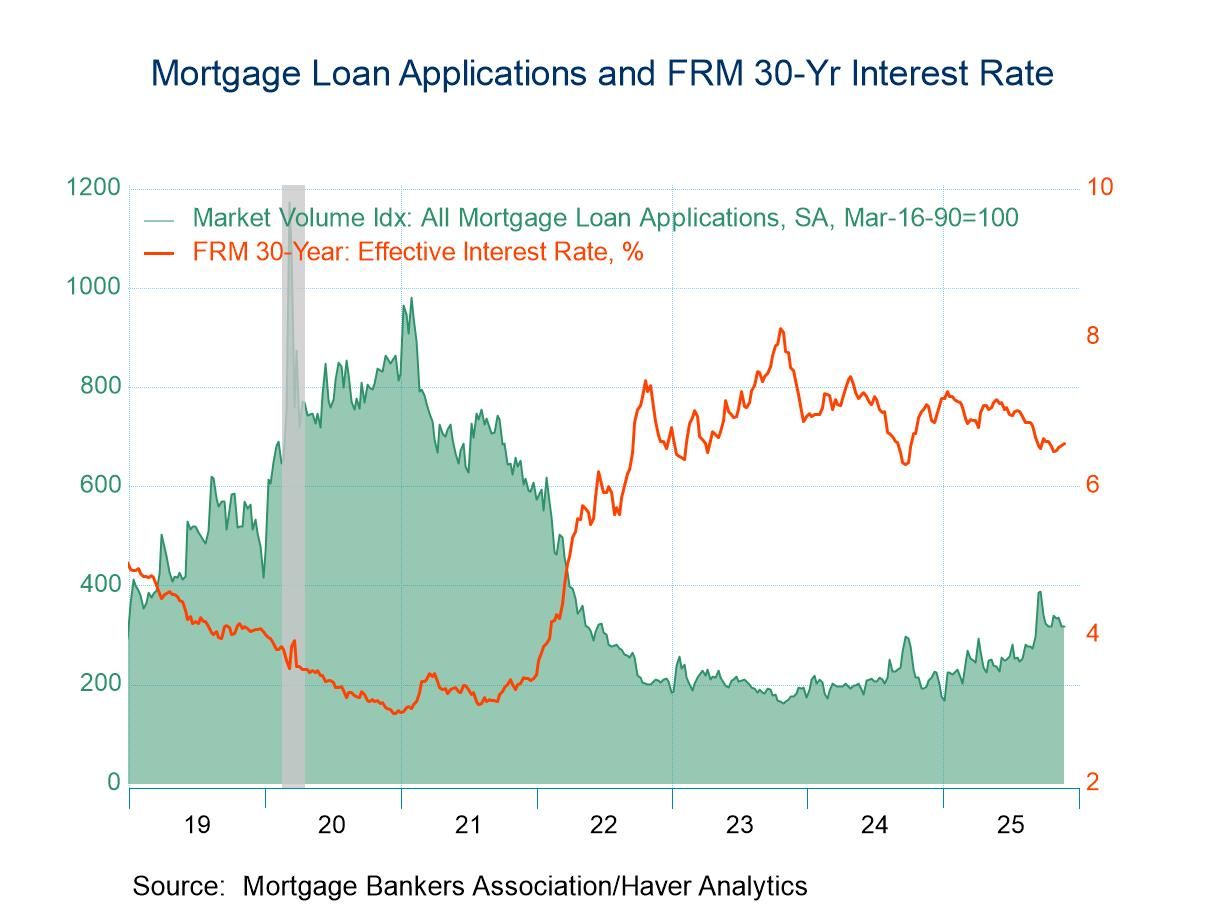 Global| Oct 01 2012
Global| Oct 01 2012U.S. ISM Indicates Moderate Improvement In Factory Sector
by:Tom Moeller
|in:Economy in Brief
Summary
Activity in the manufacturing sector improved last month. The ISM Composite Index of industrial sector activity rose to 51.5 during September, the first month above the break-even level of 50 since May. Nevertheless, the improvement [...]
Activity in the manufacturing sector improved last month. The ISM Composite Index of industrial sector activity rose to 51.5 during September, the first month above the break-even level of 50 since May. Nevertheless, the improvement was modest as the reading remained well below last year's Q1 highs near 60. The figure beat Consensus expectations for 49.8. During the last ten years there has been an 80% correlation between the index level and the three-month change in factory sector production.
Improvement in the component series was broad-based and led by new orders to 52.3. The gain in employment to 54.7 also was to its highest level since June. During the last ten years there has been an 88% correlation between the employment index and the m/m change in manufacturing payrolls. Lesser gains were logged by the production (49.5) and supplier delivery series (50.3) while the inventory index fell to 50.5.
The separate index of new export orders again improved modestly. However, the index level of 48.5 still indicated declines in exports and remained near its lowest reading since the recession's end. The import series was roughly stable at 49.5, still at its recovery low.
With higher oil prices, the price index rose sharply to 58.0, its highest level since April. Twenty seven percent of firms raised prices while 11 percent lowered them. During the last ten years there has been a 65% correlation between the index and the m/m change in the intermediate producer price index.
The figures from the Institute For Supply Management (ISM) are diffusion indexes and can be found in Haver's USECON database. The expectations data are in the AS1REPNA database.
| ISM Mfg | Sep | Aug | Jul | Sep'11 | 2011 | 2010 | 2009 |
|---|---|---|---|---|---|---|---|
| Composite Index | 51.5 | 49.6 | 49.8 | 52.5 | 55.2 | 57.3 | 46.4 |
| New Orders | 52.3 | 47.1 | 48.0 | 51.1 | 56.4 | 59.2 | 52.0 |
| Production | 49.5 | 47.2 | 51.3 | 52.5 | 57.4 | 61.0 | 50.8 |
| Employment | 54.7 | 51.6 | 52.0 | 55.2 | 57.4 | 57.3 | 40.7 |
| Supplier Deliveries | 50.3 | 49.3 | 48.7 | 51.6 | 54.7 | 58.1 | 51.6 |
| Inventories | 50.5 | 53.0 | 49.0 | 52.0 | 50.1 | 50.8 | 37.1 |
| Prices Paid Index (NSA) | 58.0 | 54.0 | 39.5 | 56.0 | 65.2 | 68.9 | 48.3 |
Tom Moeller
AuthorMore in Author Profile »Prior to joining Haver Analytics in 2000, Mr. Moeller worked as the Economist at Chancellor Capital Management from 1985 to 1999. There, he developed comprehensive economic forecasts and interpreted economic data for equity and fixed income portfolio managers. Also at Chancellor, Mr. Moeller worked as an equity analyst and was responsible for researching and rating companies in the economically sensitive automobile and housing industries for investment in Chancellor’s equity portfolio. Prior to joining Chancellor, Mr. Moeller was an Economist at Citibank from 1979 to 1984. He also analyzed pricing behavior in the metals industry for the Council on Wage and Price Stability in Washington, D.C. In 1999, Mr. Moeller received the award for most accurate forecast from the Forecasters' Club of New York. From 1990 to 1992 he was President of the New York Association for Business Economists. Mr. Moeller earned an M.B.A. in Finance from Fordham University, where he graduated in 1987. He holds a Bachelor of Arts in Economics from George Washington University.


